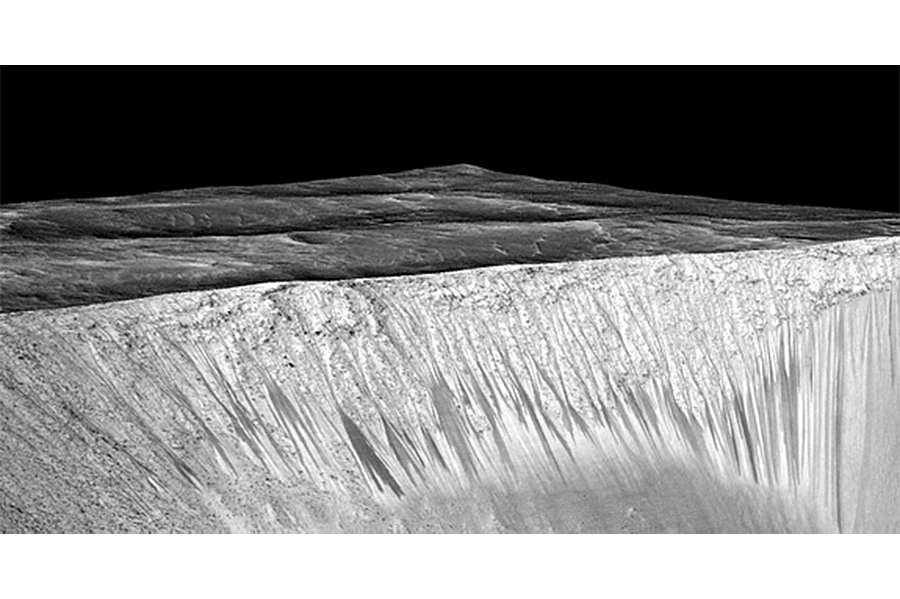Mars has liquid water, says NASA. Could there be life?
Loading...
| Cape Canaveral, Fla.
Mars appears to have flowing rivulets of salty water, at least in the summer, scientists reported Monday in a finding that could have major implications for the possibility of life on the red planet.
"It suggests that it would be possible for there to be life today on Mars," NASA's science mission chief, John Grunsfeld, said at a news conference.
Scientists in 2008 confirmed the existence of frozen water on Mars. But instruments aboard NASA's Mars Reconnaissance Orbiter have yielded the strongest evidence yet that salt water in liquid form flows down certain Martian slopes each summer, according to the researchers.
"Mars is not the dry, arid planet that we thought of in the past," said Jim Green, director of planetary science for NASA. "Under certain circumstances, liquid water has been found on Mars."
The rivulets — if that's what they are, since the evidence for their existence is indirect — are about 12 to 15 feet wide and 300 feet or more long, scientists said.
"What we're dealing with is wet soil, thin layers of wet soil, not standing water," said Alfred McEwen of the University of Arizona at Tucson, the principal scientist for the Mars Reconnaissance Orbiter's high-resolution imaging experiment.
Because liquid water is essential to life, the findings could boost the odds of life on Mars. The researchers said in the journal Nature Geoscience that further exploration is warranted to determine whether microscopic life exists on the planet.
McEwen said he, for one, believes the possibility of life on Mars to be "very high," though it would be microbial and somewhere in the Martian crust.
The presence of liquid water could also make life easier for astronauts visiting or living on Mars. Water could be used for drinking and for creating oxygen and rocket fuel. NASA's goal is to send humans there in the 2030s.
The evidence of flowing water consists of dark, narrow streaks on the surface that tend to appear and grow during the warmest Martian months and fade the rest of the year.
Mars is extremely cold even in summer, and the streaks are in places where the temperature has climbed above minus-10 degrees Fahrenheit. But salt can lower the freezing point of water and melt ice.
The source of the water is a mystery. Scientists noted it could be melting ice, an underground aquifer, water vapor from the thin Martian atmosphere, or some combination.
McEwen said that there appears to be a "significant volume" of water, speculating it could fill many Olympic swimming pools, but that it is spread thin over a wide area.
The scientists said these streaks are on steep slopes in rough terrain, making it difficult for rovers or future human explorers to get there. Robotic landers could come close, though, and observe from a distance, McEwen said. The ultimate goal would be to one day bring samples back to Earth for analysis.
Now that scientists know what they're looking for, a better, more methodical search can be carried out, Green said.
Present-day Mars is nothing like ancient Mars. Three billion years ago and more, our most Earthlike neighbor had a huge ocean, but something radical happened. Exactly what remains a mystery.
The Mars Reconnaissance Orbiter has been circling the planet since 2006.
The lead author of the research paper, Lujendra Ojha, is from Georgia Institute of Technology.
For NASA, at least, the timing couldn't be better. This Friday, the NASA-approved movie "The Martian" has its premiere.
Copyright 2015 The Associated Press. All rights reserved. This material may not be published, broadcast, rewritten or redistributed.







